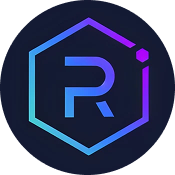When it comes to scaling blockchain technology and redefining digital advertising, Zilliqa and Basic Attention Token (BAT) stand out as two compelling projects that serve distinct purposes within the crypto ecosystem. Zilliqa pioneers in blockchain scalability through its innovative sharding architecture, making it suitable for high-throughput decentralized applications. Meanwhile, BAT focuses on transforming the digital advertising landscape by creating a privacy-preserving, user-centric ecosystem for content creators and consumers. This comparison delves into the technical intricacies, use cases, and potential of these two projects to help enthusiasts and investors understand where their strengths lie.
Short on time? Jump to Zilliqa vs Basic Attention Token Comparison
Understanding Zilliqa and Basic Attention Token ?
Zilliqa is a pioneering blockchain platform launched in 2017, renowned for being the first to implement sharding technology at scale. Its primary goal is to address the scalability issues that have hindered the mass adoption of blockchain technology. By dividing the network into smaller parts called shards, Zilliqa enables parallel transaction processing, significantly increasing throughput and reducing latency. Its native token, ZIL, fuels the network and incentivizes validators, while its smart contract language, Scilla, emphasizes security and formal verification.
On the other hand, Basic Attention Token (BAT) was introduced by Brendan Eich, co-creator of JavaScript and Firefox, to revolutionize digital advertising. Built on the Ethereum blockchain, BAT aims to create a more efficient and privacy-respecting ad ecosystem by facilitating direct interactions between users, advertisers, and content creators. The Brave browser serves as the primary platform for BAT, rewarding users for their attention while enabling publishers to monetize content more fairly. As of 2023, BAT has expanded its utility across multiple platforms, aiming to reshape how online advertising functions.
Zilliqa’s architecture is designed for high scalability, supporting thousands of transactions per second, which is essential for enterprise-grade decentralized applications. Its use of pBFT consensus ensures instant finality and robust security, making it suitable for financial services and micro-payments. Meanwhile, BAT’s focus is on providing a user-friendly, privacy-centric ad experience, with ongoing developments to expand its utility in social media, gaming, and e-commerce, emphasizing the importance of user attention as a valuable resource.
Both projects are leveraging blockchain technology to solve real-world problems—Zilliqa with scalability and smart contract security, and BAT with privacy and fair monetization of attention. Their differing approaches highlight the versatility of blockchain in addressing various digital ecosystem needs, from high-throughput transaction processing to redefining advertising economics.
Key Differences Between Zilliqa and Basic Attention Token
Underlying Technology
- Zilliqa: Zilliqa employs sharding technology to scale its blockchain linearly, allowing it to handle thousands of transactions per second. Its architecture is optimized for decentralized applications requiring high throughput, and it uses the Scilla smart contract language for security and formal verification.
- Basic Attention Token: BAT operates on the Ethereum blockchain, utilizing its established ERC-20 standard. It focuses on tokenizing user attention within its browser ecosystem, facilitating direct value transfer between users, publishers, and advertisers while prioritizing privacy.
Primary Use Case
- Zilliqa: Zilliqa is designed as a high-performance platform for decentralized applications, especially those requiring scalability and security, such as finance, gaming, and enterprise solutions.
- Basic Attention Token: BAT aims to optimize digital advertising by creating a privacy-preserving, user-first economy where users earn BAT for their attention, and content creators are fairly compensated.
Consensus Mechanism
- Zilliqa: Zilliqa uses a hybrid consensus mechanism combining Proof-of-Work for node identity and Practical Byzantine Fault Tolerance (pBFT) for transaction finality, ensuring fast and secure processing.
- Basic Attention Token: BAT relies on the security and decentralization features of Ethereum’s existing proof-of-stake mechanisms, with no dedicated consensus protocol specific to BAT.
Smart Contract Language
- Zilliqa: Zilliqa’s smart contracts are written in Scilla, a language designed for safety and formal verification, reducing vulnerabilities and bugs.
- Basic Attention Token: BAT does not have its own smart contract language but interacts with Ethereum’s Solidity-based contracts, leveraging the Ethereum Virtual Machine (EVM).
Network Scalability
- Zilliqa: Zilliqa’s sharding architecture allows for linear scalability, with experimental results showing over 2,800 transactions per second, suitable for enterprise solutions.
- Basic Attention Token: BAT’s scalability depends on Ethereum’s network capacity, which is currently improving with upgrades like sharding and layer 2 solutions but still faces congestion issues.
Zilliqa vs Basic Attention Token Comparison
| Feature | ✅ Zilliqa | ✅ Basic Attention Token |
|---|---|---|
| Blockchain Type | Sharded blockchain with linear scalability | Ethereum-based ERC-20 token |
| Main Purpose | High-throughput decentralized applications | Privacy-focused digital advertising ecosystem |
| Consensus Mechanism | Proof-of-Work + pBFT | Ethereum proof-of-stake |
| Smart Contract Language | Scilla | Solidity (Ethereum Virtual Machine) |
| Transaction Speed | Over 2,800 TPS (experimental) | Dependent on Ethereum network, variable |
| Target Users | DeFi, enterprise dApps, high-scalability projects | Users, advertisers, content creators seeking privacy |
Ideal For
Choose Zilliqa: Developers and enterprises needing scalable, secure blockchain infrastructure for complex decentralized applications.
Choose Basic Attention Token: Users and advertisers interested in privacy-centric, reward-based online advertising and content monetization.
Conclusion: Zilliqa vs Basic Attention Token
Zilliqa and BAT exemplify blockchain’s potential to revolutionize different facets of the digital economy—scalability for complex applications and privacy-preserving monetization for digital advertising. Zilliqa’s innovative sharding architecture positions it as a robust platform for high-performance dApps, especially in financial and enterprise sectors. Conversely, BAT’s focus on the attention economy and user privacy addresses the pressing issues of digital ad fraud, intrusive tracking, and fair compensation for content creators.
For investors and developers, choosing between Zilliqa and BAT depends on their specific needs—whether it’s building scalable decentralized applications or participating in a privacy-first advertising ecosystem. Both projects demonstrate the versatility of blockchain technology, with Zilliqa pushing the boundaries of scalability and security, and BAT pioneering user-centric digital monetization. Understanding these core differences can guide strategic decisions in the evolving landscape of blockchain innovation.






